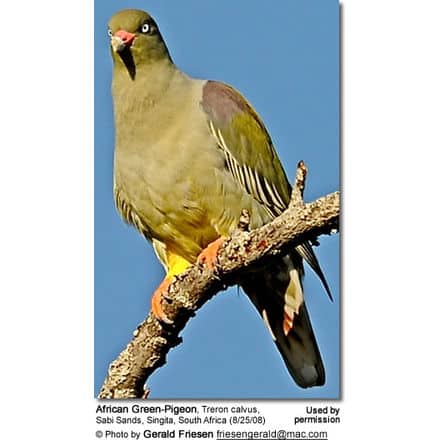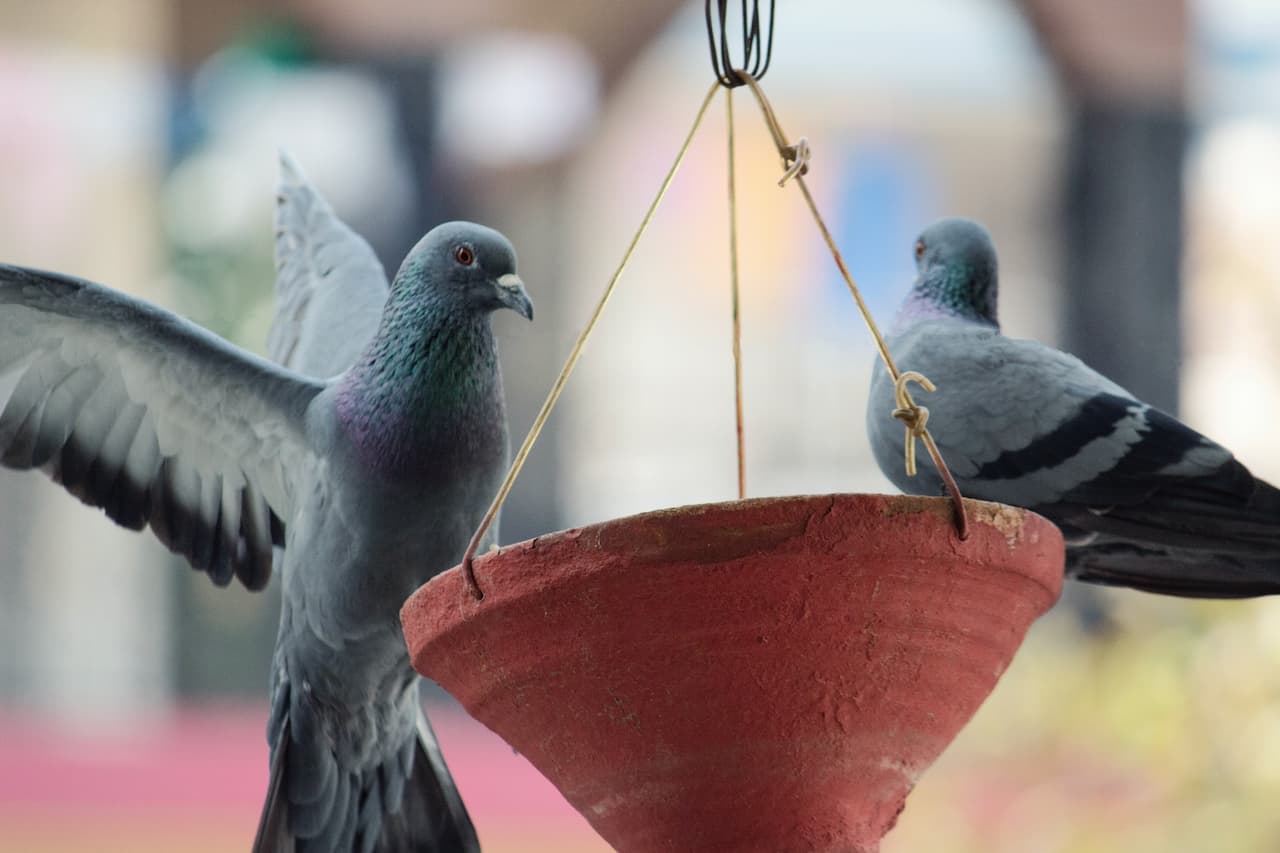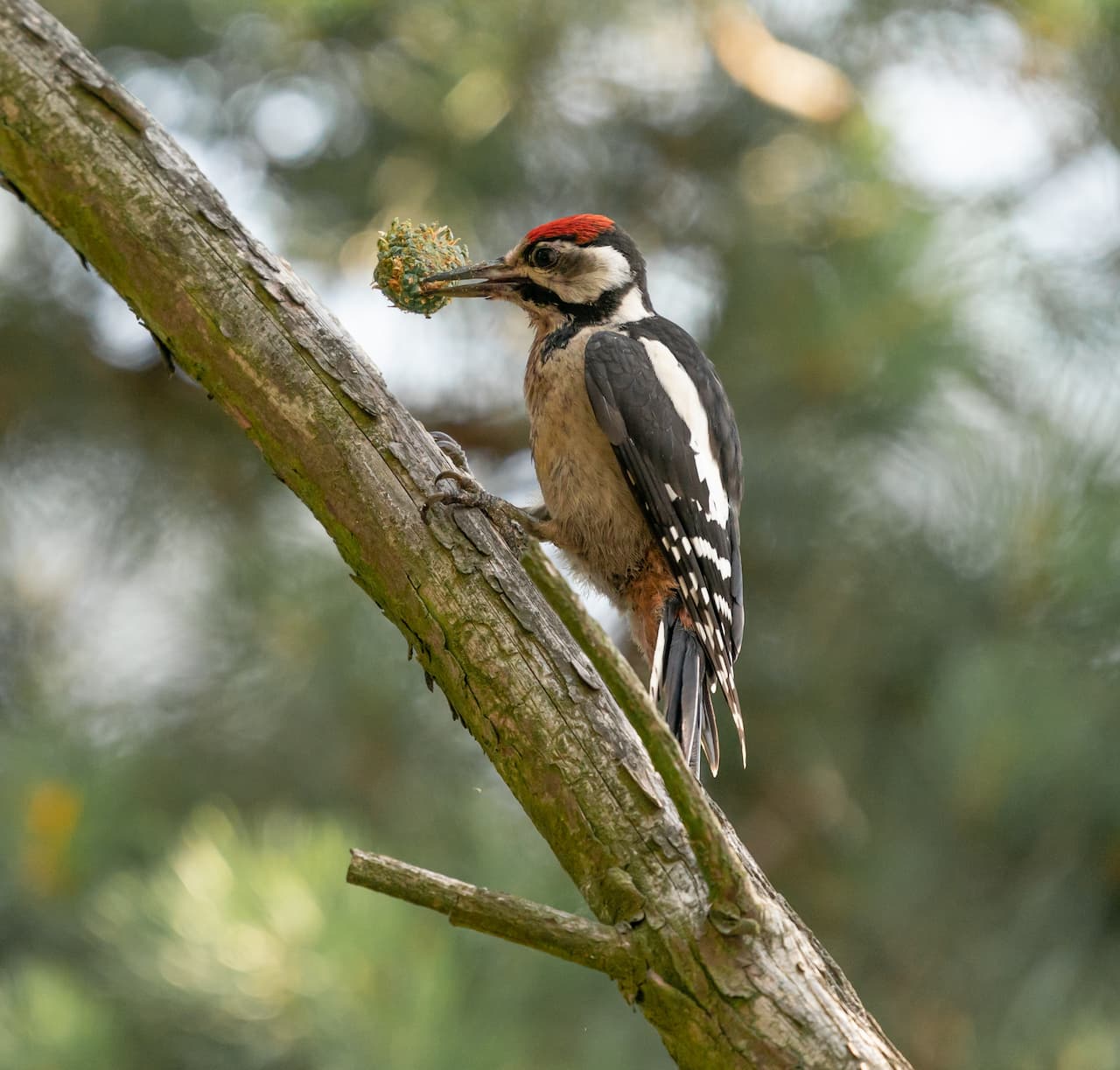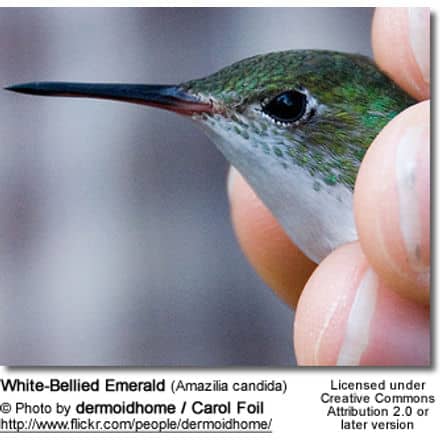Blue-tailed Hummingbird (Amazilia cyanura)
The Blue-tailed Hummingbird (Amazilia cyanura) is a Central American hummingbird species that occurs naturally in Costa Rica, El Salvador, Guatemala, Honduras, Mexico, and Nicaragua. They inhabit subtropical or tropical dry forests, moist lowland forests, as well as heavily degraded former forests.
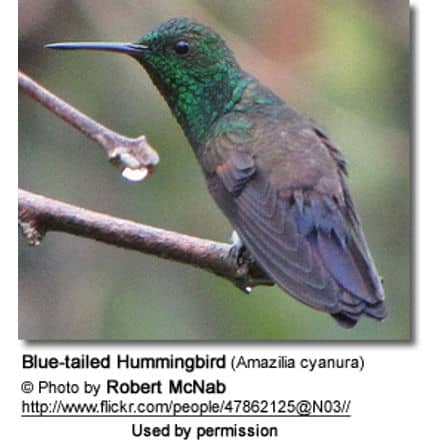
Subspecies and Distribution:
-
- Amazilia cyanura cyanura (Gould, 1859) – Nominate Race
- Range: Southern Honduras, eastern El Salvador and northwestern Nicaragua
- Amazilia cyanura guatemalae (Dearborn, 1907)
- Range: Southeastern Mexico (southeastern Chiapas) to southern Guatemala
- Amazilia cyanura impatiens (Bangs, 1906)
- Range: Northwestern and central Costa Rica
- Amazilia cyanura cyanura (Gould, 1859) – Nominate Race
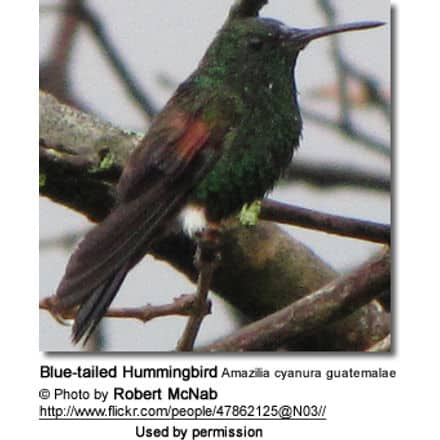
Description
The Blue-tailed Hummingbird averages 3.5 – 4 inches (9 – 10 cm in length (including its tail) and weighs about 0.14 oz or 4.0 g.
The bill is black, except the lower bill has red at the base. The upper plumage is mostly green. The rump has purple flashes. There is a cinnamon patch on base of the central flight feathers of the wing. The feathers that cover the tail are dark blue. They have white thigh tufts.
The male can be identified by his glittering green throat and under plumage.
The female’s plumage is generally paler and her throat is a less intense green; her abdomen is greyish-buff. The wing patch is either reduced or absent.
Juveniles look similar to females, but with less bright plumage and the throat is pale green.
Similar Species:
The Blue-tailed Hummingbird looks similar to the Berylline Hummingbird, but the latter has a cinnamon to coppery-colored tail.
The Blue-tailed Hummingbirds can be differentiated from the similar Costa Rican Steely-vented Hummingbirds by the rufous coloration in the secondary feathers of their wings.
Alternate (Global) Names
Czech: Kolibrík stredoamerický, kolib?ík st?edoamerický … Danish: Blåhalet Amazilie … Dutch: Blauwstaartamazilia … German: Blauschwanzamazilie, Blauschwanz-Amazilie … Finnish: Sinitimanttikolibri … French: Ariane à queue bleue … Italian: Amazilia codablu, Colibrì codablu … Japanese: rurioemerarudohachidori … Spanish: Amazilia Coliazul, Amazilia de Cola Azul, Amazlia Coliazul, Colibrí Cola Azul, Colibri Coliazul … Norwegian: Blåhalekolibri … Polish: szmaragdzik modrosterny … Russian: ??????????? ???????? … Slovak: kolibrík modrochvostý … Swedish: Blåstjärtskolibri
Diet / Feeding
The Blue-tailed Hummingbirds primarily feed on nectar taken from a variety of brightly colored, scented small flowers of trees, herbs, shrubs, and epiphytes.
They favor flowers with the highest sugar content (often red-colored and tubular-shaped) and seek out, and aggressively protect, those areas containing flowers with high-energy nectar.
Metabolism and Survival and Flight Adaptions – Amazing Facts
Beauty Of Birds strives to maintain accurate and up-to-date information; however, mistakes do happen. If you would like to correct or update any of the information, please contact us. THANK YOU!!!

